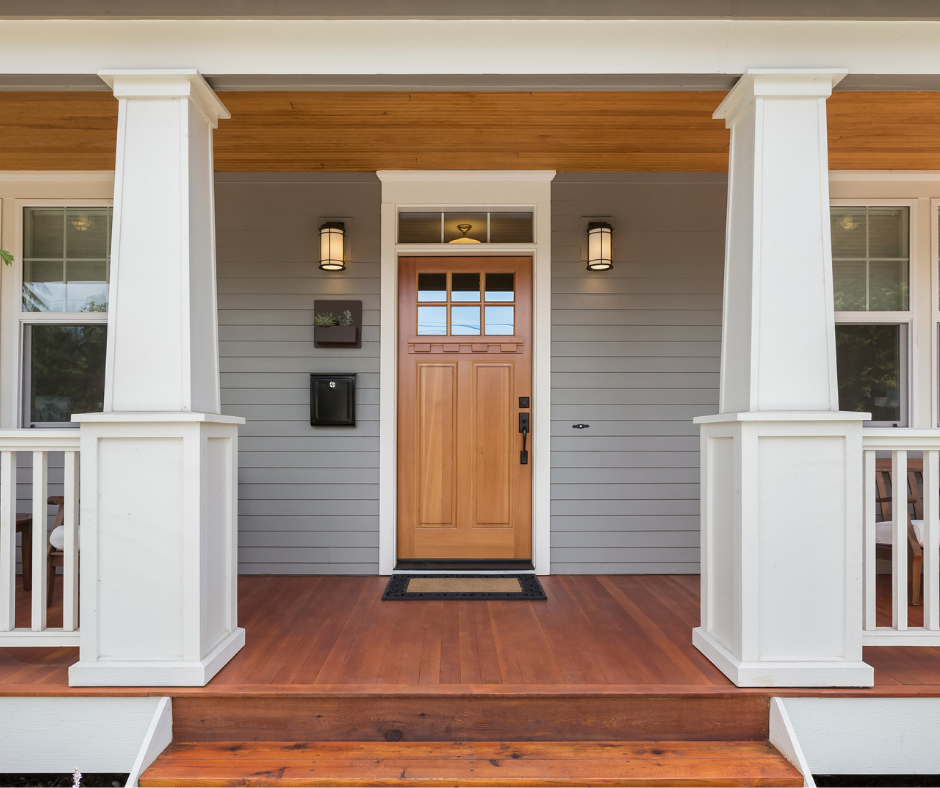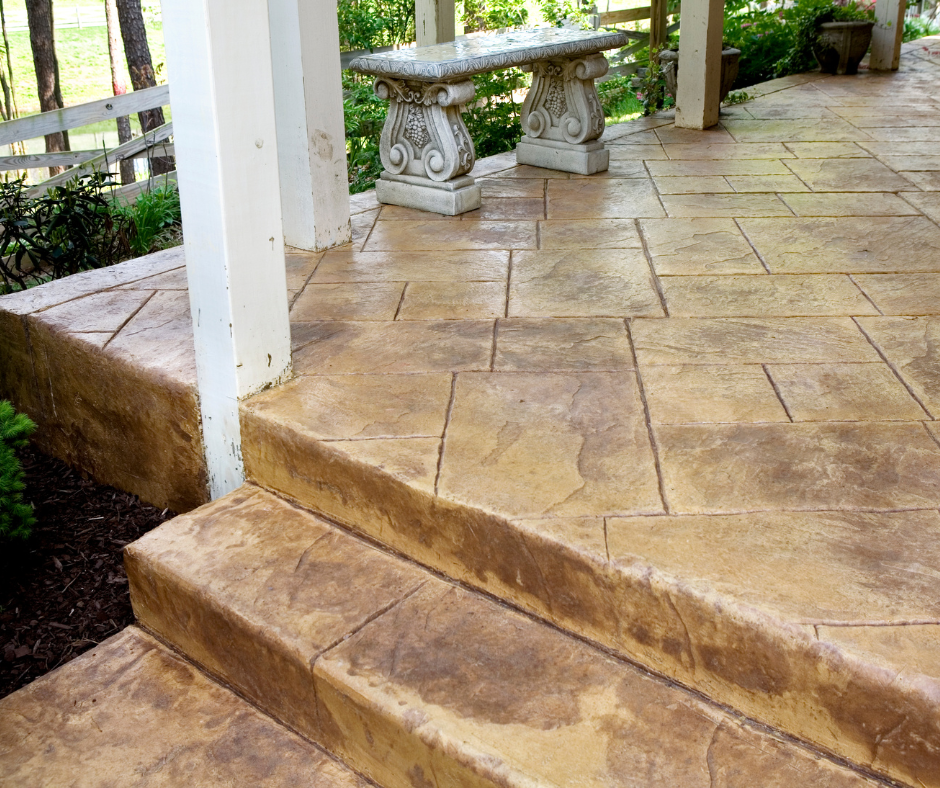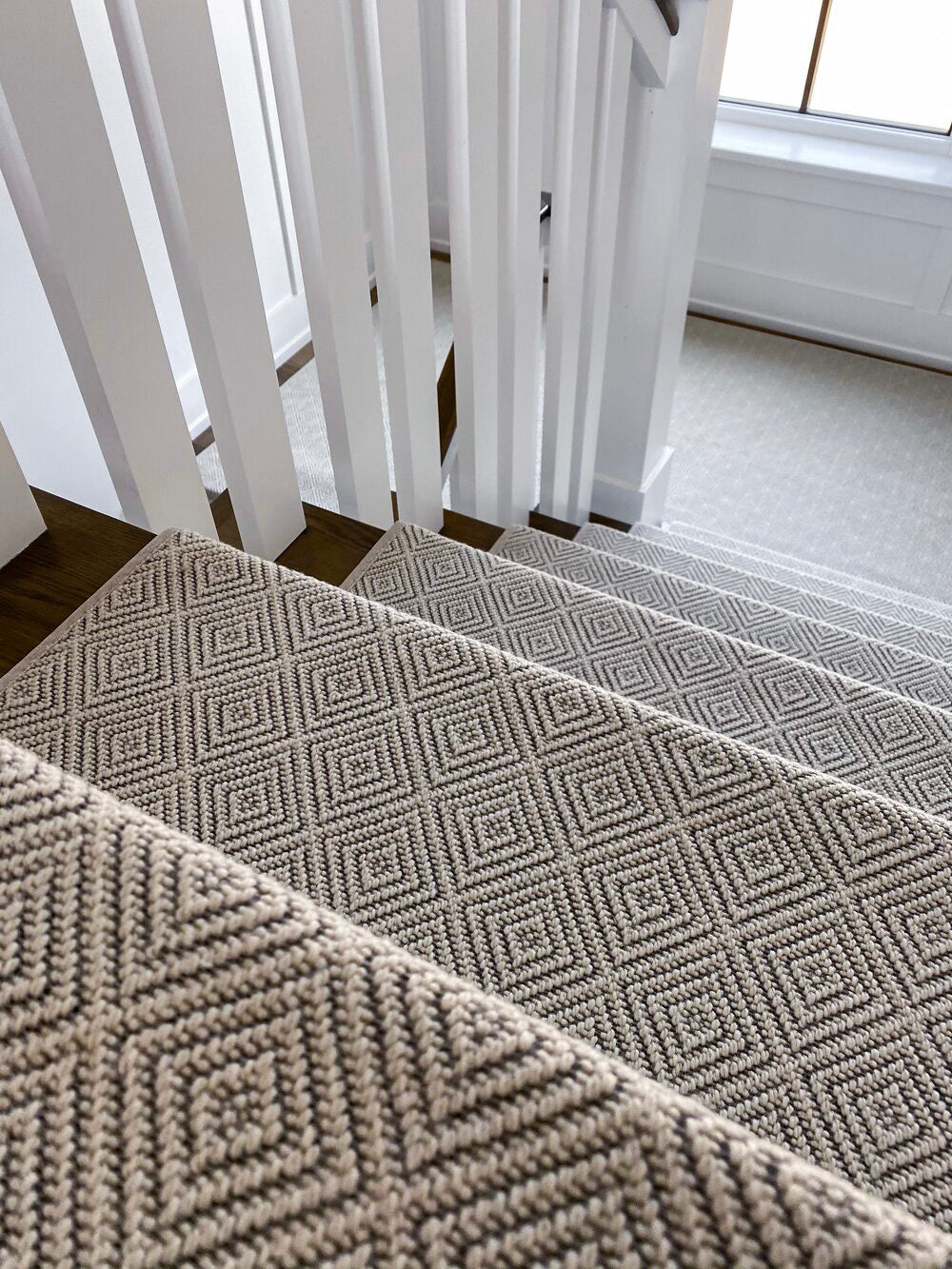Walking up and down your deck stairs should feel natural, safe, and effortless.
Deck stair riser dimensions typically range between 6 to 7.75 inches, offering the ideal balance for comfort, safety, and building code compliance.
By the end of this guide, you'll know exactly how to plan, build, and upgrade your stairs using smart solutions like carpet stair treads for added safety and style.
Understanding the right measurements is the foundation of a well-built, long-lasting outdoor staircase.
We’ll break down every critical step, from calculating riser heights to choosing durable materials that enhance both safety and design.
Stick with us to make sure your deck stairs are not only beautiful but safe and built to last for years to come.
What Are Stair Risers for Decks?
Stair risers are the vertical sections between each step on a staircase.
For deck stairs, risers aren’t just for looks—they define the height of each step and offer critical structural support.
Getting your riser dimensions right is one of the most important steps in building a safe, easy-to-use staircase.
When risers are the right height and consistent throughout, every step feels natural, keeping your family and guests safe.
Why Correct Riser Dimensions Matter
Small differences in stair riser heights can trip people up—literally.
When every riser is the same, going up and down the stairs becomes almost automatic.
If one step is just a little taller or shorter, it can throw off a person’s rhythm, increasing the risk of accidents.
This is especially important for kids, pets, and older adults, who may struggle more with inconsistent steps.
A staircase that feels smooth and predictable not only improves safety but also adds to the enjoyment of your outdoor living space.
What is the Average Rise of Deck Stairs?
For most deck stairs, the average riser height falls between 6 and 7.75 inches, aligning with the maximum riser height specified by the International Residential Code (IRC) of 7¾ inches.
This range ensures both comfort and compliance with safety standards.
For detailed guidelines, refer to the 2015 IRC Code and Commentary Volume 1, Section R311.7.5.1.
This range is widely considered the safest and most comfortable—and it meets most residential building codes.
Still, always double-check your local building regulations.
Some areas may have specific requirements you need to follow.
Finding the Right Balance
Choosing a riser height is about more than following code—it’s about comfort.
If the riser is too tall, climbing the stairs feels tiring and unsafe.
If the riser is too short, walking up can feel awkward and unstable.
For most projects, sticking within the 6 to 7.75-inch range keeps things easy, natural, and safe.
This careful balance is critical when planning for long-term use and keeping all members of the household secure.
Understanding Key Measurements for Outdoor Deck Stairs
Before picking up any tools, it helps to know the outdoor stair dimensions that are considered safe and functional.
Building sturdy stairs starts with getting the numbers right.
The right measurements mean your stairs will be easier to use, last longer, and feel safer.
Here are the basic guidelines from the International Residential Code (IRC):
-
Riser height: 6 to 7.75 inches
-
Tread depth: 10 to 14 inches
-
Stair width: Minimum of 36 inches
These standards help ensure your stairs are safe, comfortable, and compliant with most local building codes.
When you use proper outdoor stair dimensions, you ensure every step feels steady underfoot.
Choosing the right riser height and tread depth helps everyone, from toddlers to grandparents, move comfortably up and down your stairs.
Following these standards also helps with local building codes and resale value.
Well-built stairs are a selling point that makes a home more attractive.
More Tips for Building the Perfect Deck Stairs
Your deck stairs face constant exposure to the elements.
Choosing weather-resistant materials like treated wood, composite decking, or durable metal can add years to your staircase's life.
They also provide a strong foundation you can trust.
Material choice affects both safety and looks.
Durable materials make maintenance easier and keep your deck looking great year-round.
Adding Non-Slip Surfaces
A little rain or ice can turn even the safest stairs into a hazard.
Adding non-slip surfaces—like Oak Valley’s carpet stair treads—gives extra grip and peace of mind.
It's a simple upgrade that protects everyone, from toddlers to grandparents.
Non-slip stair treads also come in a variety of designs, so you don’t have to sacrifice style for safety.
Installing Secure Handrails
Handrails aren’t just for looks.
They offer critical support, especially for kids, seniors, and anyone needing a little extra stability.
Make sure your deck stairs have sturdy handrails, securely attached to the frame.
A solid handrail can be the difference between a safe climb and a dangerous fall.
Adding handrails on both sides can increase safety even more, especially on wide staircases.
Planning the Perfect Deck Staircase Design
First, measure the total vertical height from the ground to the top of your deck.
Divide that number by your target riser height (6 to 7.75 inches) to figure out how many steps you need.
This ensures your steps are evenly spaced and feel natural to walk on.
Being precise here saves a lot of headaches later on.
It ensures your deck stairs are not only safe but also beautiful and functional.
Calculate Tread Depth Carefully
After finding the number of steps, figure out the tread depth.
The tread is the part of the step your foot lands on.
A typical tread depth for outdoor stairs is between 10 to 14 inches.
This provides enough space for safe, secure footing without feeling cramped.
Treads that are too short feel awkward and unsafe, especially for people with larger feet.
Check Local Codes
Before building, check your local building codes.
Rules around outdoor stair dimensions can vary from state to state.
Building to code ensures you avoid fines and costly rebuilds down the road.
It also gives peace of mind that your stairs are safe and legal.
Many areas now require specific riser heights and maximum tread gaps for safety reasons.
Knowing your local rules can save time, money, and frustration.
Common Mistakes to Avoid When Building Deck Stairs
Even with the best intentions, it’s easy to make mistakes when building deck stairs.
Here are some common pitfalls and how to avoid them.
-
Inconsistent riser heights: Every riser should be exactly the same height to prevent tripping. Even a difference of ¼ inch can disrupt walking rhythm and lead to falls, especially for older adults or children. Measure twice and use a stringer template to maintain uniformity across every step.
-
Wrong tread depth: Treads that are too shallow or too deep can be uncomfortable and unsafe. Shallow treads don’t provide enough surface area for your foot, while overly deep treads can disrupt stride and make walking feel unnatural. Stick to code-compliant depths and test layouts before finalizing your build.
-
Skipping the permit: Always check with your local building department before you start.
-
Using the wrong materials: Make sure everything is rated for outdoor use to withstand weather changes.
-
Weak attachments: Use heavy-duty screws and fasteners to secure your stairs.
Avoiding these mistakes ensures a safer, more durable staircase that will serve your family for years.
Maintenance Tips to Keep Your Deck Stairs Safe
Keeping your deck stairs in top condition requires regular maintenance.
It doesn’t have to be complicated, but it does need to be consistent.
Here’s what you should do:
-
Inspect regularly: Look for loose boards, nails, or screws.
-
Clean thoroughly: Remove dirt, leaves, and debris that can make stairs slippery.
-
Reapply finishes: If you used wood, reseal it every few years to prevent rot and warping.
-
Replace worn materials: Swap out any damaged treads, risers, or rails quickly.
-
Check for stability: Push on railings and steps to make sure nothing moves or wiggles.
A few minutes of maintenance a couple of times a year can extend the life of your deck stairs dramatically.
It also keeps your family safer with every step they take.
Small Upgrades That Make a Big Difference
Sometimes, it’s the small touches that make the biggest impact.
Adding carpet stair treads can dramatically increase safety while boosting style.
Lighting is another simple upgrade that enhances visibility at night.
Consider solar-powered stair lights—they’re easy to install and eco-friendly.
These small changes make using your deck stairs safer, day and night.
They also add curb appeal and value to your home.
Stepping It Up
Getting the deck stair riser dimensions right isn't just about building stairs—it's about building safety, comfort, and pride into your home.
By understanding the right measurements and investing in smart upgrades like non-slip treads and secure handrails, you create a space that's both beautiful and practical.
Taking the time to plan, build, and maintain your deck stairs ensures they remain safe and enjoyable for years to come.
When you work with experts like Oak Valley Designs, you can trust that every step is made with your family’s comfort and safety in mind.
Ready to Add Safety and Style to Your Deck Stairs?
Oak Valley Designs offers beautiful, durable stair treads made right here in America—perfect for elevating the look and safety of your outdoor space.
Order your swatches today and take the first step toward safer, more beautiful stairs.
-
Website: https://oakvalleydesigns.com/
-
Phone: 706.331.0315
-
Email: info@oakvalleydesigns.com
-
Address: 30 River Ct SW Bldg E Cartersville, Ga 30120



